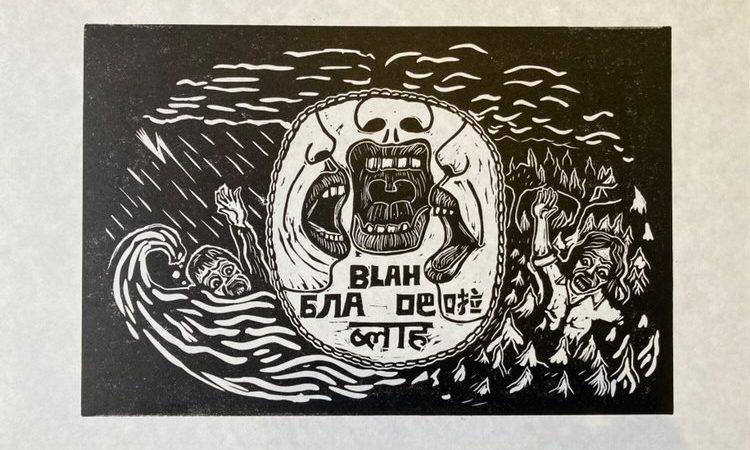Item Link: Access the Resource
Publication Info: Medium
Date of Publication: November 17
Year of Publication: 2021
Publication City: Lyon, France
Publisher: Medium - Ecole Urbaine de Lyon
Author(s): Berenice Gagne
Journal: THE MONTHLY GLOBAL CHANGE REVIEW
Volume: 08
Pages: 1
Top photo: “Climate Talking” (linocut) © John Cloake
A monthly publication by Lyon Urban School (Université de Lyon), written by Berenice Gagne, dedicated to a better understanding of global change and the Anthropocene urban world: a selection of news in many fields of study, which aims to grasp the world we live in and the world to come.
November 2021
After the Blahblahblah-storm of the COP26, let’s keep the course with a selection of articles pointing out the stakes of global change and proposing other ways of doing and living! A question quickly cleared away in international negotiations, the notion of “reparation” is emerging not only when it comes to ecological restoration but also to repairing relations between peoples and communities. Meanwhile, in the city, there is a lot of talk about urban exodus, but what is really going on?
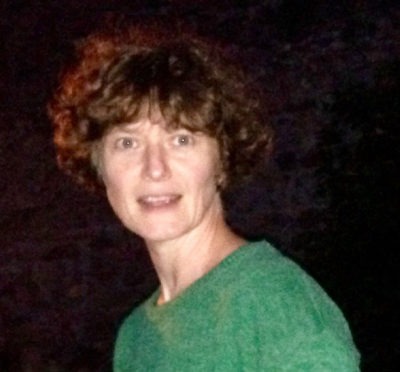 Berenice Gagne
Berenice Gagne
Urban School of Lyon – Watching over the Anthropocene Urban World & Global Change. Born in CO2 332ppm, my children 400 and 406
📢 Enjoy reading or listening to original Anthropocene podcasts: Net Zero, Algorithms , Drink or Drive.
Check out the selection of Anthropocene Good Reads #2020: 60 books in many fields of knowledge to help understand what is happening and what is coming.
If you have any comments or suggestions to enhance this daily monitoring, feel free to share: berenice.gagne@universite-lyon.fr
Follow me on Twitter and on Instagram for a daily selection.
URBAN
– “Critical urban theory in the Anthropocene”: an article that proposes to disconnect the Anthropocene and urbanization in order to think of new urban imaginaries, new urban forms, even to the point of an “urbicidal Anthropocene” (Urban Studies, 29/10/2021).
– Rewilding or revegetation in cities: a response to the evils of urban sprawl? (Bloomberg Cities, 22/10/2021).
– Urban exodus: “The imaginary of a purification through flight. Heavy with meaning, the exodus, applied yesterday to the rural and today to the urban, oscillates between biblical tragedy and post-apocalyptic drama. An imaginary of the flight which, in the history, emptying alternately the campaigns and the cities, is regularly replayed in our great national scene (sésame, 11/10/2021).
– “Urban Cooling Solutions”: a collection based on feedback from multiple territories on the analysis of vulnerability and the implementation of adaptation solutions to cope with the multiplication and intensification of heat waves in cities (AFD, October 2021).
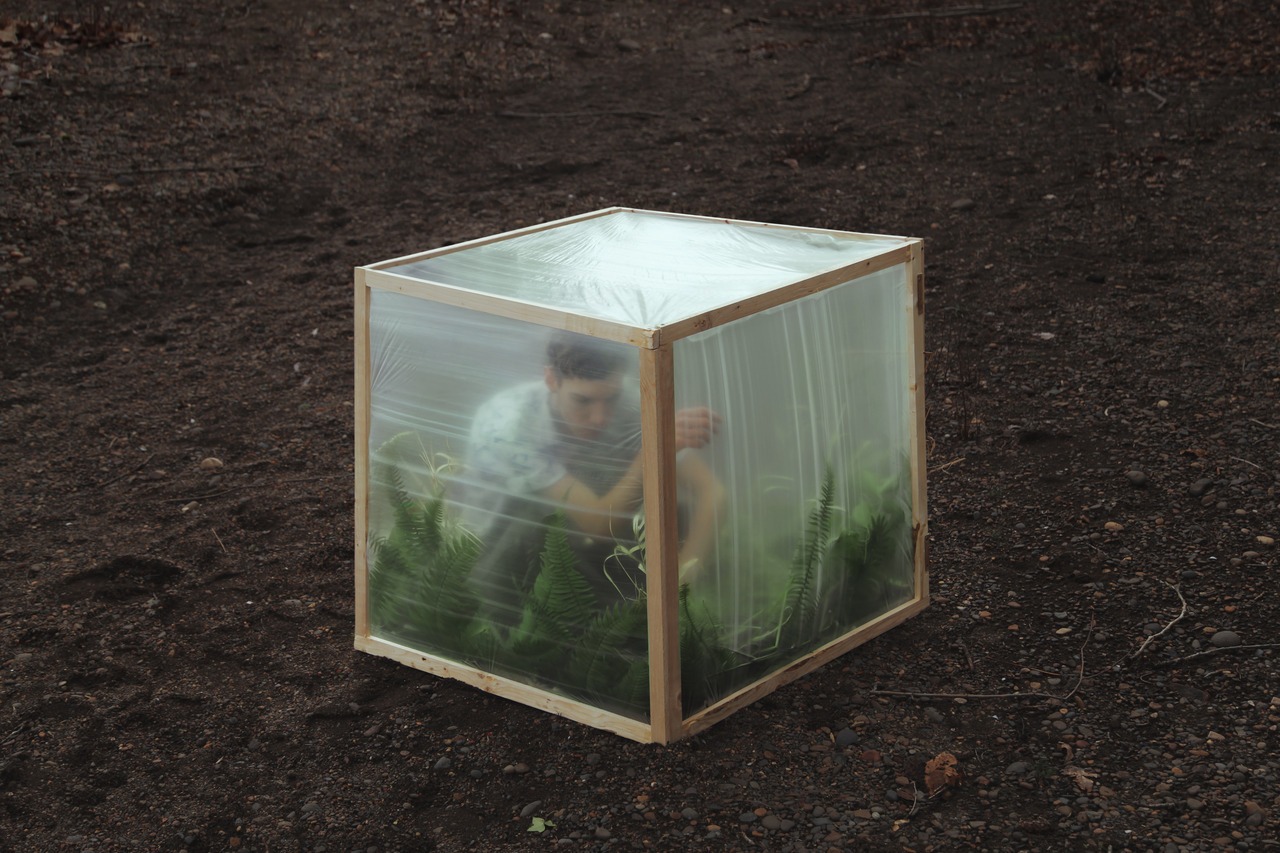
“Greenhouse” (2018) © Kyle Thompson
ACADEMIC
– For higher education to meet the challenges of global change: “Article 12 of the Paris Climate Agreement, signed at the end of COP21 in 2015, called for signatory countries to put in place measures to improve education and training about climate disruption” (AOC, 29/10/2021).
AGRICULTURE & FOOD
– For Bertrand Valiorgue, the agricultural path that is needed in the face of climate change is not one of sustainability but one of regeneration, i.e. the development of a regenerative agriculture that respects common goods (water, soil, air, biodiversity, cultural heritage), is responsible, nourishing and restorative (Agriculture Stratégies, 04/11/2021).
– A nuanced approach to the impact of livestock farming on the climate: not all livestock farming methods are equal. The impact of agribusiness is particularly important in terms of greenhouse gas emissions, water pollution and deforestation. Many benchmark studies focus only on the footprint of “economically viable” livestock production in Europe and North America, and a tiny minority look at extensive pastoralism as commonly practiced on the African continent, for example. This extensive livestock farming also contributes to carbon sequestration and the improvement of biodiversity. In the interest of climate justice, international decisions must ensure that the millions of people who make their living from pastoralism are not penalized by regulations that are not adapted to this mode of production (The Conversation, 02/11/2021).
ARTS & CULTURES
– “Can we conceive of alternative ways of living among different species? Drawing on the research of philosopher Donna Haraway and biologist Lynn Margulis, the exhibition “Science friction. Living Among Companion Species,” proposed by the CCCB in Barcelona, explores how artists become proponents of biocentrism and extend speculative thoughts into aesthetic forms. A model of exhibition intertwining science and art, which puts into orbit the emerging interspecies paradigm” (AOC, 05/11/2021).
– Exhibition “Waste Age: What can design do?” at the Design Museum (London, UK, until February 20, 2022): can design change our disposable culture? (The Guardian, 01/11/2021).
BIODIVERSITY
– 💩 A study shows that industrial fishing has altered ocean chemistry and disrupted the carbon cycle by reducing one of nature’s most effective carbon sequestration mechanisms: fish poop. The decrease in fish biomass would have led to changes in ocean chemistry comparable to those caused by human-induced climate change (The Scientist, 08/10/2021).
– The first European map of the insulating effect of forests: trees provide a buffer effect to cool the air in summer and limit the cooling under their foliage in winter. This phenomenon comes from the cover offered by the forest canopy, but also from the transpiration of trees in summer. The latter absorb the coldest water from the ground which goes up to the leaves to end up in the atmosphere, thus cooling the ambient air (Global Change Biology, 04/10/2021).
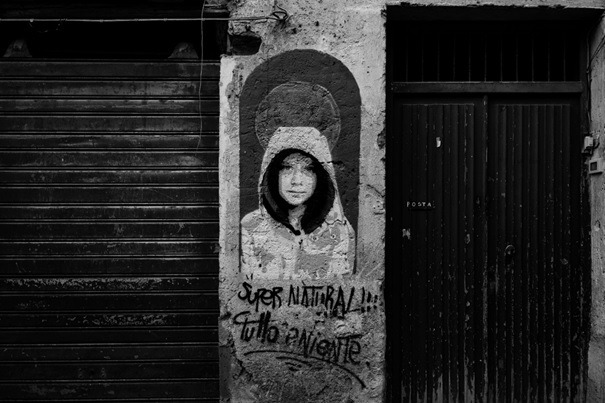
Palermo, Sicily (2021) © Alfonso Pinto
CLIMATE
– “How many tons of CO₂ emissions can we still afford?”. “In the fight against climate disruption, “carbon budgets” represent a useful way to measure how much CO2 can still be emitted, relative to a given level of global warming. As of January 2022, if we want to reach the goal of limiting global warming to 1.5 ℃ for the 21st century, we can still emit an additional 420 billion tons of CO2 at the global level; this corresponds to 11 years of emissions taking 2021 as the reference year” (The Conversation, 04/11/2021).
– The World Inequality Database reports on global greenhouse gas emissions between 1990 and 2019 based on a global dataset of income and wealth inequality, both between countries and within countries (WID, 21/10/2021).
DECOLONIALISM & POSTCOLONIALISM
– “Climate change is a justice issue — these 6 charts show why” (The Conversation, 03/11/2021).
– Quelle représentation pour les peuples autochtones à la COP 26 ? Sur 1005 militant·es de l’environnement assassiné·es depuis l’accord de Paris (2015), 1 sur 3 est un·e personne autochtone (The Guardian, 03/11/2021).
– Climate reparations: a rich article on climate colonialism, reparations and geoengineering. Olúfẹ́mi O. Táíwò: “If the revolution happens tomorrow, all of that carbon is still there. We can’t moralize the carbon out of the air” (Intelligencer, 01/11/2021).
– A reflection on the word “anthropocene”, the urgency it conveys, its limits (claiming that all humans are equally responsible and victims of the state of the world) and its colonial legacy to be deconstructed (The Conversation, 20/10/2021).
– A study that deconstructs the Eurocentric concept of “pristine nature” from which humans would be absent and shows instead how the territories hosting the greatest biodiversity on the planet have been shaped for thousands of years by indigenous peoples, today threatened by a vision of conservation that excludes them (Proceedings of the National Academy of Sciences, 05/10/2021).
– “The Earthly Community. Coloniality of Infrastructure”: a paper by Achille Mbembe that discusses the threat of racism in the face of the Anthropocene. To face the Anthropocene, “the ultimate utopia involves coming back to the Earth, the last name of a We that would embrace human beings as well as objects, viruses, plants, animals, oceans, machines, and all the forces and energies with which we must now learn to live in bio-symbiosis. Racism, the ultimate neurosis of separation, remains the greatest obstacle to the idea of a We. As a singular form of the war of species, racism is diametrically opposed to any consciousness of the in-common” (e-flux, octobre 2021).
DIGITAL
– “What are the raw materials in your iPhone, Starbucks cup and bike? — in pictures”: a very explicit visualization of the materiality that is hidden in our Anthropocene way of life (The Guardian, 03/11/2021).
– “Submarine cables & global internet. The power is in the infrastructure”: a dive into the infrastructure that carries the world wide web (lundi matin, 18/10/2021).
– Against the night: after the light pollution of the terrestrial cities, the megaconstellations of satellites sent in the low orbit to ensure the high speed of terrestrial telecommunications compete with the stars (Science, 07/10/2021).

Beach and oil in Huntington Beach (1937)
© Herman Schultheis / L.A. Public Library (via Extraction Art)
ECONOMY
– The dilemmas of the energy transition: a call to abandon market logics and instead resort to international planning in order to use the remaining “dirty resources” for the necessary clean infrastructure (Sidecar, 05/11/2021).
– The international body responsible for developing International Financial Reporting Standards (IFRS) considers that any company applying them is expected to mention climate risks, as these may have an impact on its results, cash flows or the value of its assets, and consequently on expected returns (Le Monde, 04/11/2021). In the same vein: “Accounting standards must become greener and companies must quantify their environmental footprint” (The Conversation, 03/11/2021).
– An analysis, by the economist Eloi Laurent and the ecologist Serge Morand, of the difficult choice to be made between an approach centered on the economic value of life and one that recognizes the interdependence between life forms as an essential value. The authors call “green growth” or “bio-growth” “the growth of gross domestic product (GDP) derived from the exploitation of living things” because “the problem that is supposed to be the keystone of the biodiversity crisis” would be “the value of nature”. For the authors, this is a “separatist approach”: “separating the living world from the social world by making economic growth a compass, petrifying the living world by means of “natural capital” and fragmenting it by pricing non-human species under the pretext of preserving them”. They propose an alternative: a “holistic approach to social and natural systems”, “bio-solidarity”. It designates “the interdependence of the different forms of the living world, including humans, and is measured by the vitality of the links that unite both non-human species with each other and these species with the human species. Health thus becomes an essential indicator of the vitality of natural and social links. And to conclude, in a striking manner: “the essential reason for the destruction of these links is not the value of nature or its supposed defect but the nature of value, narrowly economic, and its excesses” (The Conversation, 11/10/2021).
HEALTH
– Diseases, heat waves, famines… climate change promises a health disaster. The Lancet’s 2021 report on health and climate change is alarming: the climate crisis is intensifying, making people’s health ever more fragile (The Lancet Countdown on health and climate change, October 2021).
LAW
– “Should subjective rights be extended to animals alone or to all of nature? Animal advocates believe that legal ecocentrism is fundamentally anthropocentric” (The Conversation, 27/10/2021).
MIGRATION
– Interview with François Gemenne, director of the Hugo Observatory dedicated to environmental migration at the University of Liege: “If we only worry about people who live within our national borders, we will never be able to act effectively against climate change. Because action against climate change requires a form of altruism, requires that we consider the other, the one beyond our borders, as a part of ourselves” (Radio Canada, 25/10/2021).
POLITICS & GEOPOLITICS
– A column on the political stakes of the COP 26: “it is a battle not only over reducing carbon emissions, but also over the rules of a new phase of capitalism that will affect us all” (The Guardian, 01/11/2021).
– An interview with François Gemenne on the political stakes and the limits of the COPs: “We must stop overestimating the power of the COPs: they remain endless negotiations between States, on a catastrophe that has already begun. However, they are crucial and would benefit from being open to non-state actors” (Reporterre, 29/10/2021).
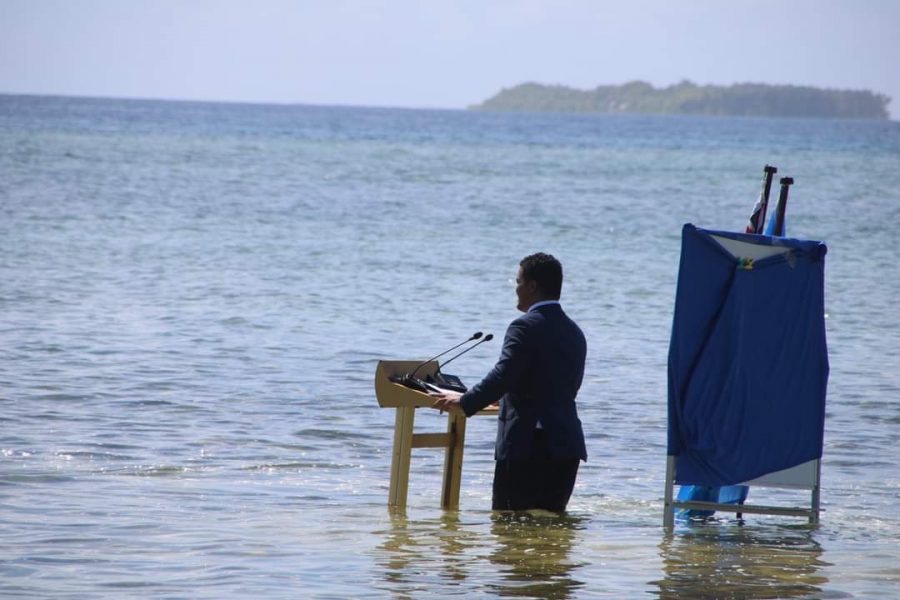
Remote speech of Simon Kofe, Minister of Foreign Affairs of Tuvalu, for the COP 26 © Anish Chand

